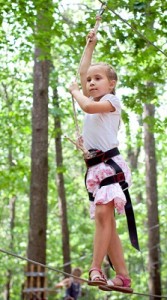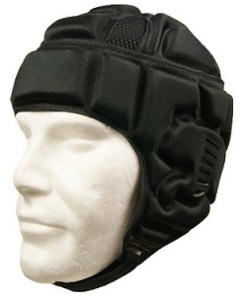Strategies to prevent injury in adolescent sport
Participation in sports has many benefits including increased cardiovascular fitness, greater self-esteem, relaxation, improved co-ordination and strength, improved concentration and academic performance, and can develop teamwork and social skills. However, sport is the main cause of injury in adolescence and may prevent future involvement in recreational activities if preventative measures are over looked.
Pre-season conditioning
 Injury prevention starts with pre-season conditioning. Ideally this should begin 6 weeks prior to game day with 2-3 training sessions per week. Most competitive level sports team already do this but if this is not the case ask the team coach if you or some of the other parents can help organise some pre-season training sessions or you could make use of the local sports grounds after school or on weekends to have a run around.
Injury prevention starts with pre-season conditioning. Ideally this should begin 6 weeks prior to game day with 2-3 training sessions per week. Most competitive level sports team already do this but if this is not the case ask the team coach if you or some of the other parents can help organise some pre-season training sessions or you could make use of the local sports grounds after school or on weekends to have a run around.
Conditioning should include a short warm up then setting up a little obstacle course to side step/cut/dribble around, practice some goal kicking/baskets etc. For accuracy, include some shuttle runs back/forward, side-side or other drills that might be beneficial for the given sport. Finish with a little cool down and some stretches.
General fitness which can be developed through running, cycling, swimming etc. is also important as fatigue can cause delayed muscle reactions and reduced strength in the later stages of the game increasing the risk of injury.
Balance training
The ability for our muscles to respond quickly to sudden forces, change in direction, and cope with uneven surfaces is related to our proprioception. This is our internal awareness of where our body is in space and requires practice and traini ng to help reduce the risk of ligament and muscle injuries from sprains and strains.
ng to help reduce the risk of ligament and muscle injuries from sprains and strains.
Simple tests include balancing on one foot, rising up onto tip toes on two legs and one and preforming these activities with eyes open and closed and while turning the head and body or throwing/catching a ball. If children aren’t naturally practicing these activities on a daily basis by playing in playgrounds, walking on balance beams and so on, then these activities will need to be prioritised especially if they have already had ankle or knee sprains.
A physiotherapist can help develop a programme specific to individual needs and remember – be patient next time your child wants to walk along a small retaining wall and dodge cracks in the foot path instead of walking next to you.
Posture
We all remember our parents telling us to ‘sit up straight’ and they couldn’t have been more right so don’t quit harping on to your children either. Poor posture can cause changes in muscle balance and length leading to faulty biomechanics, reduced flexibility, reduced sports performance, and an increased risk of injury. Postural education is sometimes better received if given by a second party and so a few physiotherapy or pilates sessions may be helpful if flexibility or posture is a concern.
Managing growth spurts
Another common reason for sports injuries in adolescence is that they have a high level of exposure to sports at a time of significant physiological change. Monitoring growth spurts can provide a lot of insight as to why there might be a few more complaints of aches and pain or performance might be a little flat. It is important that during these times a stretching regime is maintained especially for the calves, quadriceps and hamstrings which are most susceptible to growth related tendon inflammation, particularly in sports involving a lot of jumping.
These pains can develop gradually but are often provoked by an increase in activity or training ie. school sports day or a tournament. It is important to reduced physical activity by at least 20% for 2-3 weeks, ice, stretch, and massage but if symptoms persist then consult a physiotherapist for some guidance.
In the case of representative level sports it is important to look out for signs of overtraining such as reduced performance despite completing all of the training sessions, having trouble completing training sessions, susceptibility to illness and poor recovery, recurrent injuries, and sleep disturbances. As hard as it might be to drop some sports in favour of others, or to say “no” to extra performances, these decisions are necessary to avoid season ending injuries.
Strapping & bracing does not prevent injury
In order to prevent recurrent injuries, early intervention is key. Consulting a health professional early on will save a lot of pain, time, and money in the long-term. Preventative bracing and strapping has not been proven to prevent sprains and has several limitations. Taping and braces should only be used in cases of existing ligament tears to help increased support and encourage muscle control around the injured joint. In most cases this should not be a permanent solution for injury prevention as the dependency on braces/tapes can have adverse effects on muscle strength and proprioception if used long-term.
 Gear to prevent injuries
Gear to prevent injuries
Sports equipment such as shin guards, mouth guards, and knee pads etc. can be very beneficial. Head gear can help reduce head wounds but not necessarily concussions and so it is extremely important to teach correct tackling techniques and penalize unsafe tackles in sports such as rugby and league.
Sport should be enjoyable !
Achievement in and enjoyment of sports during adolescence is often directly associated with ones’ experience of injuries throughout their participation. Many injuries can be prevented through preseason conditioning, balance training, sport specific skill and technique training. Sometimes injuries are unavoidable and unpredictable but good management and rehabilitation can prevent ongoing problems and enable ongoing participation in sports.
By Karen Donaldson-Barron
Registered Physiotherapist



